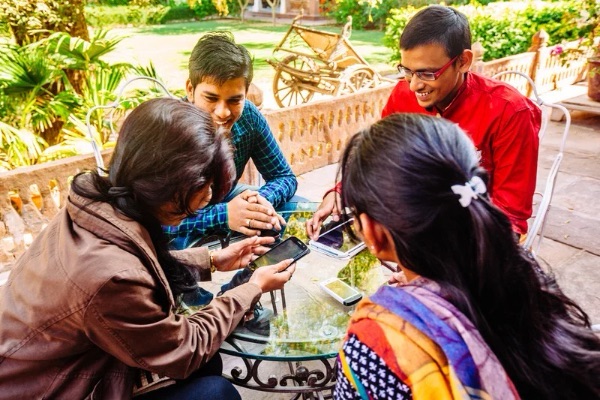The 90s: The Age of Aspiration Begins
In the early 1990s, India stood at the threshold of an economic awakening. Liberalization wasn’t just a policy reform; it was the quiet ignition of a nation’s imagination. For the youth back then, dreams were modest yet intense — to get a stable job, support a family, and find dignity in consistency.

The middle-class India of that decade viewed success as a secure government job, a roof over one’s head, and perhaps a scooter in the garage. Ambition was contained by the boundaries of opportunity. Engineers and doctors were heroes, not because of glamour, but because they symbolized certainty.
But beneath the quiet rhythm of ambition, something profound began — the belief that one could aspire beyond survival. The youth of that decade didn’t yet chase fame or freedom; they were the foundation-builders, the ones who lit the lamp of possibility for generations that would follow.
The 2000s: The Global Gate Opens
The first decade of the 21st century saw the rise of the information age and with it, the digital Indian. The youth of this era were the first to travel abroad in droves, not just as migrants, but as contributors to the global economy. They were shaped by the IT boom, by the sight of Infosys campuses, call centers, and tech parks rising from what used to be farmland. English became not just a language of communication, but a passport to the world.
Aspirations shifted from job security to career growth. From “settle early” to “make it big.” From “be known locally” to “be recognized globally.” The middle-class youth embraced mobility — social, economic, and geographical. A new vocabulary emerged — MBA, startup, venture, stock market, investment.
It was the first time the Indian youth dared to imagine themselves not just as job-seekers but as value creators. The seeds of entrepreneurship were sown quietly in hostel rooms and cyber cafés across the nation.
The 2010s: The Era of Disruption and Identity
Then came the social media decade — a time when identity became as important as income. The youth of this era were the first to live in dual realities: one physical, one digital. They didn’t just consume the internet; they performed on it. Instagram, YouTube, and Twitter turned ordinary voices into movements.
Aspirations now took on a new tone — to be seen, to be heard, to matter. Success wasn’t just financial anymore; it became emotional and visible. The young Indians of the 2010s sought meaning in work, not merely money. They wanted to contribute, express, innovate, and make impact part of their job description.

This was the rise of influencer culture, digital entrepreneurship, freelancing, and creative independence. For the first time, Indian youth didn’t just dream of leaving India — they dreamed of transforming India.
The 2020s: Conscious Capitalism and the Purpose Generation
The current decade has brought with it paradoxes. The youth today are more connected than ever — yet lonelier. More informed than ever — yet overwhelmed. More powerful — yet restless for meaning.
Aspirations are no longer just about what they can get; they’re about what they can give back. Environmental awareness, mental health advocacy, diversity, and social entrepreneurship have emerged as defining aspirations.
Owning less, experiencing more. Building startups not just for valuation, but for values.
Unlike the 90s where parents chose careers for their children, today’s young Indians are defining new career paths entirely. They’re designers, gamers, climate warriors, educators, creators, and digital nomads — reimagining what it means to “work” and “succeed.”
There’s also a subtle but visible rise in India-first pride — the belief that the next big idea need not come from Silicon Valley, but from Surat, Hyderabad, or Guwahati. Aspirations are now local and global at once — rooted and ambitious.
The Next 30 Years: What Lies Ahead
Projecting the next three decades of Indian youth aspirations is less about technology and more about consciousness. The youth of 2050 will not just inherit a digital world — they will inherit a world redefined by their choices today.
2030s:
This decade will see the rise of AI-augmented careers. Traditional job definitions will dissolve. The youth will increasingly seek self-expression through problem-solving. Startups will emerge around personal ethics — sustainable tech, ethical AI, mental health tech, regenerative agriculture, and inclusive education.
The aspiration will shift from “build fast” to “build right.”
2040s:
As automation peaks, the next generation of Indian youth will turn inward. Humanity will become the new luxury.

People will aspire to balance, peace, and purpose. Spiritual wisdom and technology will converge. Indian philosophical thought — mindfulness, yoga, holistic education — will see a renaissance, merging seamlessly with science.
2050s:
By mid-century, aspirations will likely center around legacy. The youth of that time will live longer, healthier lives, and will measure success in impact footprints — how much good they created, how many lives they touched, how much consciousness they expanded.
The pursuit of meaning will replace the pursuit of fame. The desire to contribute will overshadow the desire to conquer.
The Timeless Thread
Across these decades, one thing has remained constant — the desire to rise.
Whether it was the 90s youth seeking stability, or the 2020s youth seeking purpose, every generation has pushed the needle of aspiration forward.
The Indian youth today stand at the intersection of heritage and innovation — carrying in one hand the wisdom of their ancestors, and in the other, the tools of the future.
Their aspirations have evolved from survival to success, and from success to significance.
And that evolution tells a larger story — that India’s future will not be built merely by its technology or economy, but by the consciousness of its youth.




